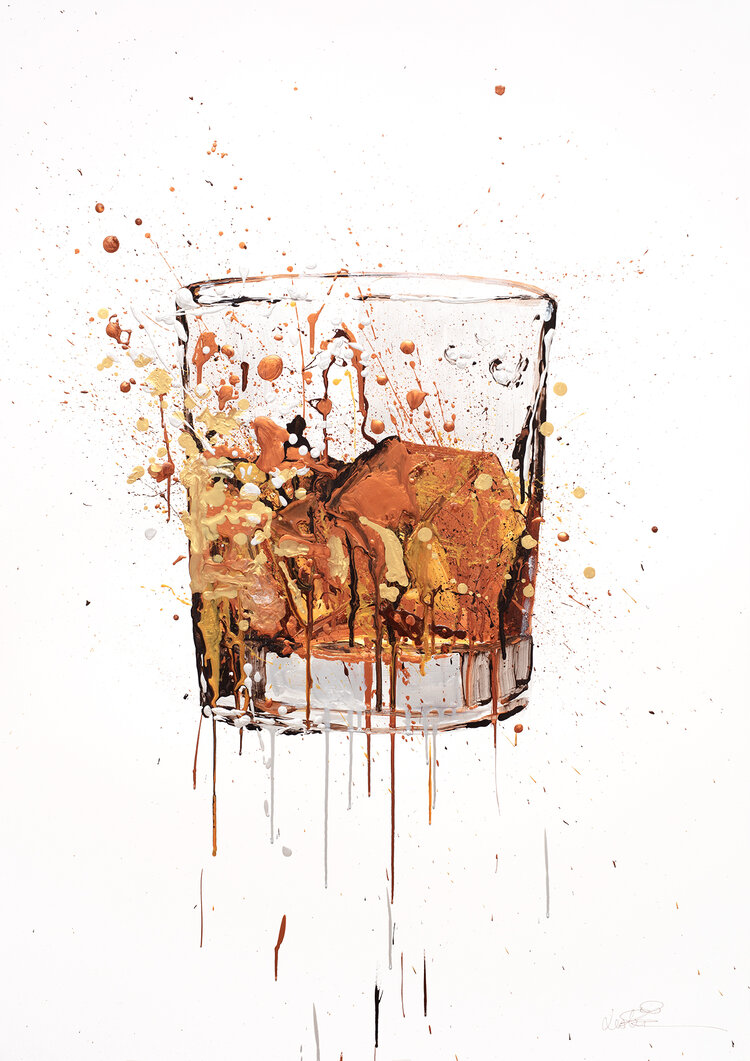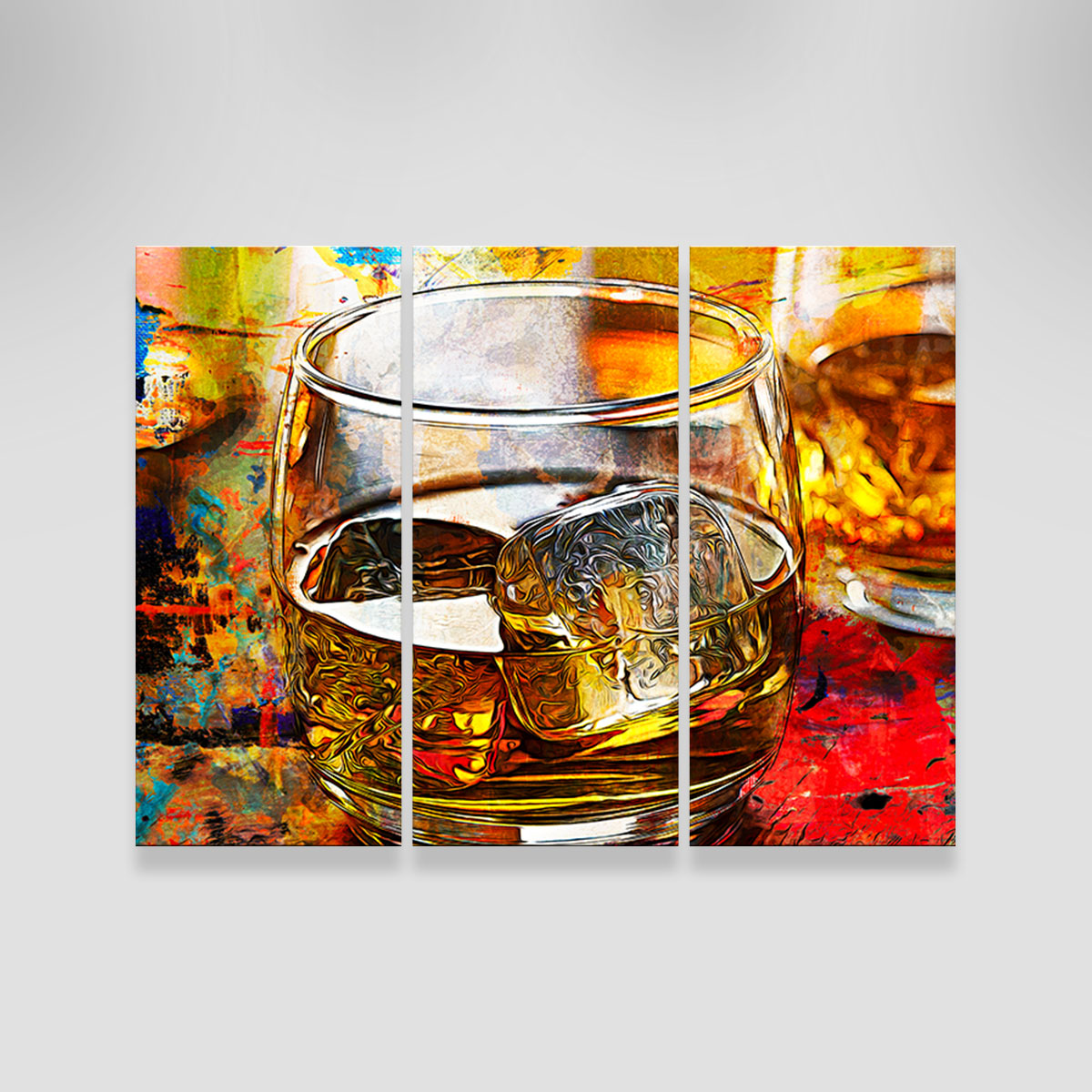Whiskey Art as a Declaration: Just How It Enhances Home Décor
Whiskey Art as a Declaration: Just How It Enhances Home Décor
Blog Article
The Value of Whiskey Art in Celebrating Heritage and Workmanship in the Beverage Industry
The elaborate relationship between bourbon art and the party of heritage and workmanship within the drink industry can not be overemphasized. With thoughtfully designed labels and bottles, scotch brand names envelop their historic origins and the artisanal skills that define their manufacturing approaches. This creative dimension not only boosts market charm however also acts as an avenue for cultural storytelling, fostering a much deeper connection between the customer and the craft. As we explore the numerous aspects of this topic, intriguing inquiries regarding the impact of modern-day patterns on conventional practices develop, triggering further assessment.
The Historical Origins of Whiskey
At the heart of bourbon's allure exists an abundant tapestry of historical origins that trace back to old worlds. The beginnings of whiskey can be linked to the purification practices of the Sumerians and Babylonians around 2000 BCE, where very early kinds of fermented grain beverages started to arise. It was in the Middle Ages that the art of purification advanced considerably, especially in Ireland and Scotland, leading to the production of whiskey as we understand it today.
The term "scotch" itself acquires from the Gaelic word "uisce beatha," meaning "water of life." This expression emphasizes the social value of bourbon in Celtic societies, where it was usually related to routines, parties, and public bonding. By the 15th century, purification came to be an acknowledged craft within reclusive areas, leading the means for the facility of legal distilleries.
As trade paths increased, bourbon's appeal expanded, going beyond local borders and recording the passion of connoisseurs worldwide. Whiskey Art. This historical journey shows not only the craftsmanship behind whiskey production but also its integral role in social and social contexts, noting it as a significant drink throughout history
Artistic Expression in Branding
Bourbon branding stands as a compelling crossway of creativity and business, where visual identification plays an essential duty in shaping consumer perception. The aesthetics of whiskey labels, packaging, and marketing products show not only the brand's story however additionally its core worths and heritage. Via artistic expression, distilleries communicate a story that reverberates with consumers, stimulating emotions and triggering connections.
Making use of color, typography, and images in branding serves to set apart items in a saturated market. For instance, conventional motifs may stimulate a feeling of credibility and workmanship, while modern styles can symbolize innovation and forward-thinking. This calculated imaginative direction boosts brand acknowledgment and commitment, allowing consumers to create an individual partnership with the bourbon they pick.
In addition, artistic expression in branding often acts as a party of local heritage. Distilleries often include local symbols or historical recommendations into their styles, developing a local color that invites consumers to take part in a more comprehensive cultural experience. Inevitably, the artistry behind scotch branding not only boosts aesthetic allure but also enriches the overall story of the brand name, cultivating a deeper admiration for the workmanship and heritage ingrained in each container.
Workmanship in Bottle Layout
The virtuosity noticeable in whiskey branding extends beyond aesthetic identification to include the craftsmanship associated with bottle style. Each bottle functions as a vessel not simply for the spirit within, yet also for the story it outlines its practice, top quality, and origin. The layout procedure requires precise attention to information, as components such as closure, material, and shape add substantially to the overall assumption of the bourbon.
Workmanship in bottle layout involves choosing top notch glass that can improve the scotch's color and clearness, while likewise supplying a responsive experience for the customer. The shape of the bottle should be both aesthetically attractive and functional, often showing the heritage of the brand. Several distilleries opt for unique forms or embossed logo designs that stimulate a feeling of authenticity and history.
In other addition, the tag style and typography play a critical role in connecting the brand's story. Limited Edition. A well-crafted bottle not just mesmerizes the customer's eye yet also enhances the brand's commitment to high quality and tradition. In this way, the craftsmanship of container design comes to be an essential facet of the whiskey experience, merging artistry with a profound regard for heritage
Cultural Relevance of Whiskey Art
Celebrating practice and craftsmanship, the cultural value of scotch art goes beyond mere visual appeals, linking with the historic and social stories of the areas from which it comes from. Each container offers as a canvas, depicting the special tales, mythology, and traditions that have formed neighborhood whiskey-making practices. The elaborate layouts often reflect the heritage of the distillers, incorporating signs and themes that reverberate with the society and worths of their communities.

In enhancement, whiskey art plays a crucial role in common celebrations and celebrations, functioning as a tangible link in between individuals and their shared experiences. By appreciating the creativity in bourbon packaging, customers grow a deeper understanding and respect for the craft, ultimately enriching their pleasure of the beverage itself.
Modern Trends in Bourbon Presentation
In recent times, the discussion of bourbon has actually progressed to reflect modern preferences and patterns while still recognizing conventional workmanship - Realism Art. Distilleries are increasingly concentrating on aesthetic components that boost the total alcohol consumption experience, bridging the space between heritage and modernity
Cutting-edge container designs have arised, frequently including sustainable materials and imaginative tags that tell compelling tales. Many brand names now work together with regional musicians, infusing their items with unique visual expressions that resonate with consumers. Additionally, limited-edition releases are typically packaged in collectible containers, adding value and charm for lovers.

Conclusion
In conclusion, whiskey art offers as an important channel for expressing the heritage and craftsmanship inherent in the beverage sector. Via complex branding, innovative container layouts, and culturally significant creative components, whiskey these details brands successfully honor their traditions and link with consumers.


Craftsmanship in bottle style includes choosing premium glass that can enhance the scotch's color and clarity, while additionally giving a responsive experience for the consumer. In this method, the craftsmanship of container layout ends up being an essential facet of the scotch experience, merging artistry with an extensive regard for heritage.
In conclusion, whiskey art offers as an important conduit for sharing the heritage and workmanship fundamental in the beverage market.
Report this page